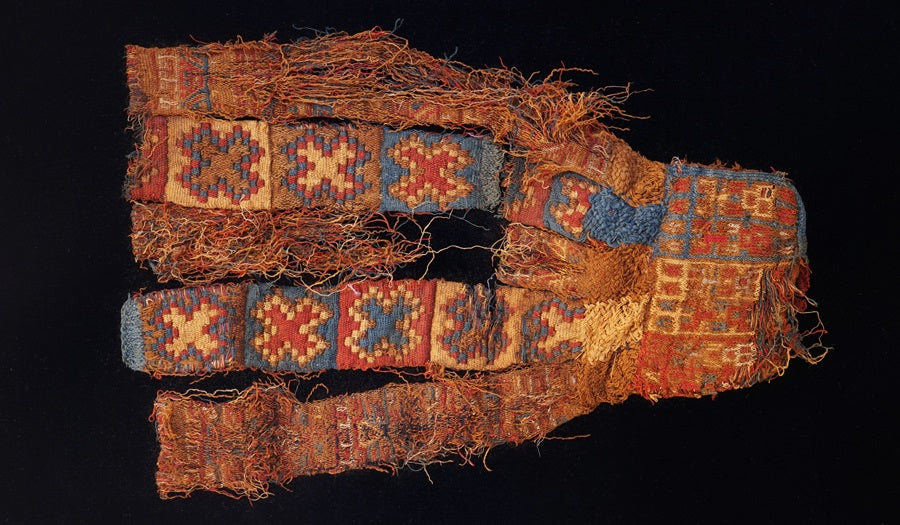
Textiles of Ancient Andez

All images courtesy of Gallery Kojima.
Gallery Kojima, in Tokyo, is currently showing an exhibition of ancient Andean textiles. The Textiles of Ancient Andez includes more than 50 pieces of cloth from the Andean Mountains and the Pacific region, dating from 900BC to 1400AD. The show runs until mid-December.

Spinning technology had already developed before 2500BC in Andean South America and textiles from the exhibition show a representative range of sophisticated weaving techniques. The range of colours on show also demonstrates the use of a wide range of dyes and pigments.
Pre-Hispanic textiles are known for their complex weaving techniques as well as use of embroidery to create abstract or figurative designs. Likely to be made from cotton and animal fibres (including the native llama, alpaca and other camelid species), the textiles have held vibrant colour for many hundreds of years. One sample also includes the use of feathers.


The exhibition draws parallel between the technologies of the South Americans of this time and the Japanese Jomon people and asks if it shows a route that early man may have taken. Dr Yoshiharu Sekino: “A lot of earthenware similar to Japanese Jomon pottery was found in Valdivia on the Pacific coast of Ecuador. One of them was dated 5500 years ago. The pattern of the pottery was similar to that excavated from the Ataka Kaizuka in Kyushu and the Tado ruins on the Miura Peninsula. Dr. Megger has presented a hypothesis. It was possible that the Jomon people moved to Ecuador in South America about 5,000 years ago. A theory full of dreams and romance, but not widely accepted.” (via Google Translate).
Gallery Kojima mainly deals in the work of Japanese modern and contemporary artists, but also collects and sell works of all ages and countries on the basis of its concept, “Esprit Sauvage (the spirit of the wild)”. This includes a permanent collection of Japanese tribal antique textiles.
For more information, visit www.gallery-kojima.jp

